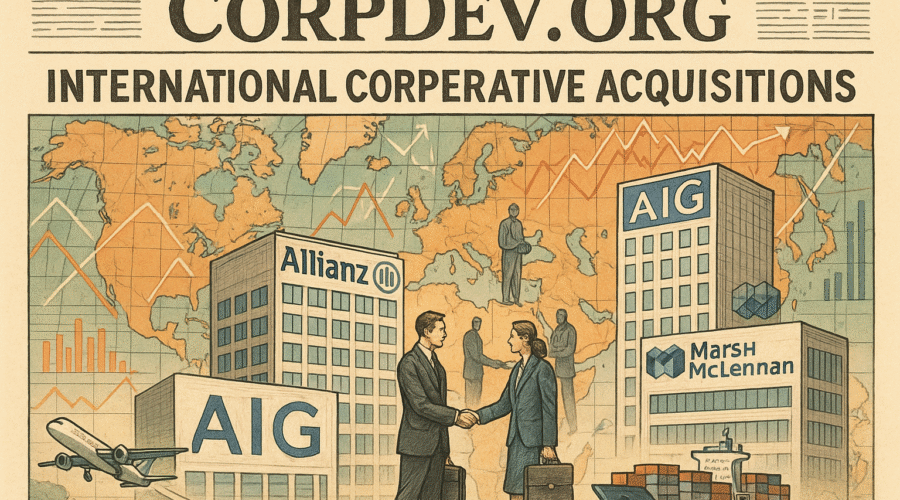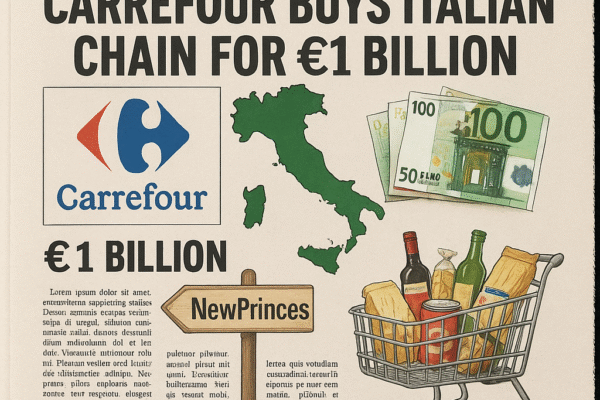Global merger and acquisition activity has entered a new phase of complexity in 2025 as geopolitical fractures reshape risk calculus for dealmakers. While stabilizing interest rates and pent-up capital fuel transaction volumes, escalating trade tensions, regional conflicts, and regulatory fragmentation are forcing buyers to fundamentally rethink risk mitigation strategies. This environment has propelled transactional risk insurance into a central role in deal architecture, with warranty & indemnity (W&I) coverage demand surging 38% year-over-year to $67.8 billion in placed limits[8]. The insurance market itself faces inflection points as reinsurance pressures collide with innovative product development, creating both challenges and opportunities for investors navigating an increasingly bifurcated global economy.
Geopolitical Fractures Reshape Cross-Border Risk Profiles
The New Calculus of Deal Risk Allocation
Cross-border M&A activity now requires navigating a labyrinth of emergent risks that extend far beyond traditional due diligence parameters. The convergence of trade policy volatility (US-China tech decoupling), regional conflicts (protracted Ukraine war spillover effects), and regulatory nationalism (EU’s AI Act, US Inflation Reduction Act provisions) has created multidimensional risk matrices[1][4]. These forces manifest concretely through mechanisms like the Committee on Foreign Investment in the United States (CFIUS) expanding scrutiny of tech deals and the European Union’s Foreign Subsidies Regulation creating new filing requirements for non-EU acquirers[4].
Dealmakers now face closing risks exceeding 20% probability in politically sensitive sectors, compared to historical averages below 5%[4]. This paradigm shift is evident in the insurance market’s evolving stance – where once-standard exclusions for regulatory intervention now require bespoke coverage enhancements. The result has been a 47% increase in political risk endorsements for W&I policies since Q3 2024[8].
Regional Risk Differentials Reshape Capital Flows
Geopolitical pressures are creating stark regional divergences in M&A insurance utilization patterns. North American deals now average 2.3x higher retention levels ($18.7M) compared to European transactions ($8.2M), reflecting heightened regulatory uncertainty and litigation exposure[5][8]. Meanwhile, Asia-Pacific buyers are driving 62% of new parametric insurance solutions for deal closure guarantees, particularly in Southeast Asian energy and infrastructure deals[1][8].
| Region | Avg. Retention | Political Risk Endorsements | Premium Growth |
|---|---|---|---|
| North America | $18.7M | 39% of policies | +22% YoY |
| Europe | $8.2M | 28% of policies | +18% YoY |
| Asia-Pacific | $12.1M | 53% of policies | +41% YoY |
Insurance Market Evolution in Response to Structural Shifts
Product Innovation Meets Capital Market Pressures
The transactional risk insurance market is undergoing its most significant transformation since the global financial crisis. While primary layer pricing declined 12-15% in 2024 due to excess capacity, reinsurance treaty renewals in Q1 2025 brought 20-25% rate increases, forcing MGAs to reevaluate portfolio strategies[1][8]. This capital market tension has accelerated product innovation, including:
Parametric Climate Covenants: 32% of 2025 energy sector policies now include automated payout triggers for carbon credit shortfalls or physical climate damage metrics[2][8].
Cyber Warranty Bundling: 45% of tech deals over $500M now integrate silent cyber coverage with traditional W&I policies, up from 12% in 2023[2][8].
The Great Underwriting Reset
Market consolidation is reshaping underwriting practices as claims frequency increases 20% in North America and 30% in EMEA[8]. The days of $1B single-transaction limits with 10% retentions are fading, replaced by layered programs combining traditional W&I with parametric solutions. Insurers now require minimum 15% equity participation from PE buyers in covered deals, fundamentally altering return profiles[5][8].
Sector-Specific Dynamics Driving Insurance Innovation
Technology: The New Frontier of Risk Transfer
Global tech M&A insurance placements surged 58% in 2024, driven by AI regulatory uncertainty and data sovereignty concerns. A landmark $4.3B semiconductor deal featured the first “Algorithmic Warranty” policy, covering post-closing performance gaps in machine learning systems[2][8].
Energy Transition: Bridging the Valuation Gap
Renewable energy deals account for 39% of all 2025 insurance placements, with insurers developing novel products to address intermittency risk and regulatory flux. The “Renewable PPA Wrap” now features in 28% of coverage, guaranteeing revenue streams against policy changes[8].
The Road Ahead: Strategic Implications for Market Participants
Capital Allocation in an Age of Risk Repricing
With $49.4B in 2024 deal values signaling market resurgence[7], insurers must balance capacity deployment against evolving risk profiles. The emergence of blended W&I/R&W products (17% market share) demonstrates creative responses to jurisdictional complexity[5]. However, reinsurance market discipline suggests that 15-20% of MGAs may exit by 2026[1].
Operationalizing Geopolitical Intelligence
Leading insurers now embed real-time geopolitical monitoring into underwriting workflows, with 73% using AI-driven risk mapping tools[4][8]. This capability becomes critical as deal timelines compress – 68% of 2025 transactions required policy binding within 14 days of LOI[8].
Conclusion: Navigating the New Risk Ecosystem
The cross-border M&A insurance market stands at an inflection point where risk transfer mechanisms must evolve faster than the threats they address. As geopolitical fractures deepen, success will belong to those who can transform insurance from a financial backstop into a strategic enabler of deal certainty. Market participants must now grapple with three imperatives: integrating real-time geopolitical analytics into underwriting models, developing next-generation parametric solutions for emergent risks, and rebuilding reinsurance partnerships for sustainable capacity deployment. Those who master this triad will define the next era of global dealmaking.
Sources
https://www.insurancebusinessmag.com/us/news/breaking-news/manda-insurance-demand-could-surge-as-crossborder-deals-get-riskier-534175.aspx, https://www.insurancebusinessmag.com/us/news/breaking-news/why-manda-is-booming-in-specialty-insurance-533076.aspx, https://laurencesimons.com/news-insights/overview-of-the-insurance-ma-market-the-implications-for-ma-lawyers/, https://www.financierworldwide.com/geopolitical-risk-in-cross-border-ma-tough-times-ahead-before-and-after-closing, https://www.goodwinlaw.com/en/insights/publications/2023/11/insights-privateequity-ma-cross-border-transaction-risk-insurance, https://www.easysend.io/blog/mergers-and-acquisitions-in-the-insurance-sector-anticipating-a-resurge-in-2024, https://riskandinsurance.com/insurance-ma-values-surge-despite-fewer-deals-in-2024/, https://www.insurancebusinessmag.com/us/risk-management/news/manda-boom-drives-record-demand-for-transactional-risk-insurance-marsh-report-529685.aspx





